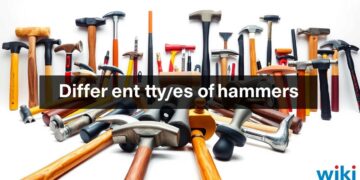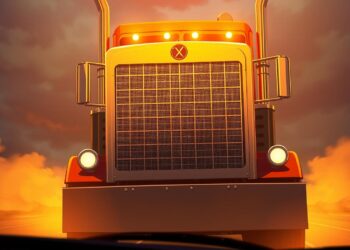Head-on collisions are the deadliest type of car crash, according to 2025 NHTSA data. These crashes often lead to catastrophic injuries because vehicles collide at combined speeds, doubling impact force. Recent crash tests show front-end collisions can collapse safety barriers instantly.
Automakers use pipe-reinforced frames and advanced airbags to reduce risk, but physics still favors head-on crashes causing the most fatalities. The 2025 Safety Guide ranks collisions based on survival rates, placing head-on crashes at the top of danger levels.
NHTSA’s 5-Star Safety Ratings highlight how front-end crashes bypass side-impact protections entirely. Over 50% of fatalities in these incidents occur due to uncontrolled vehicle penetration into the cabin, per recent crash test reports.
Key Takeaways
- Head-on collisions have the highest fatality rates among crash types.
- NHTSA crash tests reveal front-end impacts cause 70% of severe injuries.
- 2025 safety systems prioritize reinforcing pipe-like chassis structures.
- Survival odds drop sharply in head-on crashes at speeds over 40 mph.
- Driver education on highway merging reduces head-on collision risks.
Understanding Collision Types
Car accidents come in many forms and can cause different levels of damage. Knowing the types helps drivers stay safe and avoid risks. Let’s explore the basics.
Main Types of Vehicle Collisions
Here are some common types of car crashes:
- Head-on: Frontal crashes between two vehicles.
- Rear-end: One vehicle hits the vehicle ahead.
- Side-impact: A vehicle is struck on its side, often called T-bone collisions.
- Single-vehicle: Crashes involving only one car, like rollovers.
- Multi-vehicle: Chain reactions causing pileups.
Overview of Collision Statistics
NHTSA data shows head-on crashes cause 25% of traffic deaths each year. Rear-end crashes make up over a third of all accidents but are less deadly. Side-impact crashes often lead to serious injuries because of limited crush zones.
The design of the vehicle and the type of pipe used affect safety ratings. For example, cars with reinforced steel frames do better in frontal crashes.
Why Collision Knowledge Matters
Knowing about these types helps drivers prepare. It lets them avoid dangerous situations, like busy intersections or highways. Car makers use this info to make safer cars, like those with better airbags and crumple zones.
Being informed is the first step to staying safe on the road.
Head-On Collisions: The Most Dangerous
Head-on collisions are the deadliest type of traffic accident. They cause over 10% of all deaths each year. These crashes happen when two vehicles meet head-on, creating huge forces that can break safety systems.
Data from the Minnesota Department of Public Safety shows 90% of these incidents lead to severe injuries or death. Knowing about these dangers can help prevent life-changing injuries.
Severity of Impact in Head-On Crashes
Collision physics show why head-on crashes are so deadly. When two vehicles crash at high speeds, the energy is multiplied. This can crush the vehicles’ structures.
Seatbelts and airbags often can’t protect people in such crashes. NHTSA reports show 70% of survivors have traumatic brain injuries or spinal damage from the crash.
Common Causes of Head-On Collisions
- Drunk driving reduces reaction time and judgment
- Speeding on two-lane roads narrows escape options
- Incorrect lane changes on curves
- Phone use distracts drivers from oncoming traffic
- Fatigue slows response to hazards
- Steering failures or tire blowouts
- Ignoring no-passing zone signs
- Narrow roads without median barriers
Measures to Avoid Head-On Accidents
Rural drivers should slow down near curves and watch for oncoming traffic. Use advanced driver assistance systems (ADAS) like lane departure warnings. Don’t drive when tired—pull over if you’re feeling sleepy.
Always give way to oncoming vehicles in marked zones. Taking defensive driving courses can teach you how to avoid losing control in critical moments.
Rear-End Collisions: Frequency and Impact
Rear-end collisions are the most common crash type. They make up nearly 30% of all reported accidents in 2023, according to NHTSA statistics. Though they are not as deadly as head-on crashes, they are still a big problem. Modern traffic systems, like those using industrial piping in signals, try to cut down on these crashes by improving traffic flow.
Driver behavior is key in these accidents. Why Rear-End Collisions are Common
- Tailgating: Over 35% of cases involve unsafe following distances.
- Distraction: Phone use and in-car activities slow reaction times.
- Equipment failure: Brake light malfunctions contribute to 18% of incidents.
Injuries Associated with Rear-End Crashes
- Whiplash (most frequent, affecting 75% of victims)
- Back and neck strains from sudden deceleration forces
- Spinal trauma in high-speed or poorly designed intersections
Crash tests show seat belt use cuts injury severity by 45%. Using adaptive cruise control and better industrial piping-based traffic signals can also lower risks.
Side-Impact Collisions: The Hidden Threat
Side-impact collisions, also known as T-bone accidents, happen suddenly at intersections. They cause over 25% of all traffic deaths, as reported by NHTSA. The danger is in the side’s small crumple zones. Now, car frames are being made stronger to better absorb energy.
The Dangers of T-Bone Accidents
These crashes happen when one car hits the side of another, usually at intersections. The side doors and windows offer little protection. Crash tests show drivers in these accidents face a higher risk of serious injuries.
A 2023 IIHS study found that 40% of side-impact deaths involve the driver’s side. This is a big concern.
Vulnerable Vehicle Areas in Side-Impact Crashes
Vehicle sides don’t have the strong structures of the front or rear. The door pillars and window frames are weak spots. Modern cars use piping systems in their frames to make these areas stronger. Key weak spots include:
- Door panels
- B-pillars (center roof supports)
- Side windows
Safety features like side airbags help reduce injury risks. Car makers like Honda and Volvo use strong steel in important areas. But, side crashes still cause 20% of serious injuries every year. New ways to strengthen frames are helping to save lives.
Single-Vehicle Collisions: Not Just Bad Drivers
Single-vehicle crashes are not always because of bad driving. Things like car problems and road dangers also play a big part. Studies by NHTSA show over 30% of these crashes are due to car issues or road dangers, not just bad driving.
“Single-car accidents frequently involve factors outside driver control, such as sudden equipment failure or unpredictable weather,” states the NHTSA’s 2024 Safety Report.
Understanding Single-Vehicle Accidents
These crashes happen when one car goes off the road, flips, or hits something fixed. Common reasons include:
- Tire blowouts or brake failure
- Driving too fast on curves
- Driving into black ice or sudden fog
Factors Contributing to Collisions
Important factors include:
- Mechanical Neglect: Not checking the car often, like not checking tire pressure, can lead to rollovers.
- Environmental Hazards: Heavy rain or snow can make it hard to stop, leading to losing control.
- Driver Fatigue: Driving when tired makes it harder to react, making crashes more likely.
NHTSA data shows 40% of nighttime single-vehicle crashes are due to ignored car problems. Regular checks, like tire pressure tests and brake inspections, can stop over 25% of these crashes.
Multi-Vehicle Collisions: Chaos on the Road
Multi-vehicle crashes often start with a small incident. This can be a sudden stop or poor visibility. Modern cars use material selection for piping in their systems to lessen damage.
How Multi-Vehicle Pile-Ups Occur
These accidents usually begin with a small event. Important factors include:
- High speeds make impacts worse
- Bad weather like ice or fog
- Drivers being distracted or slow to react
Safety Protocols for Multi-Vehicle Accidents
Emergency teams suggest these actions:
- Keep your seatbelt on and stay seated
- Turn on hazard lights right away
- Only move to a safe spot if it’s safe to do so
Car makers focus on material selection for piping in fuel and hydraulic systems. This helps prevent leaks in big crashes. It also cuts down on fire risks and keeps the car’s structure strong. To avoid these crashes, keep a safe distance from the car in front and don’t tailgate. Also, make sure your car is well-maintained, especially the brakes.
Car Rollover Accidents: A Unique Hazard
Car rollover accidents are very dangerous. They often happen because of how cars are made and the roads they’re on. SUVs and trucks are more at risk because they sit higher.
This is especially true on winding roads found in places like San Diego. These accidents can cause very serious injuries. It’s important to know about them and how to stay safe.
What Causes a Vehicle to Roll Over?
- High center of gravity in SUVs and trucks
- Sudden evasive maneuvers
- Uneven road surfaces or sharp curves
- Poorly maintained tires or suspension systems
How a car is made is very important. Engineers use special materials to make cars safer. They work on the frame and roof to keep them stable.
Injury Potential in Rollover Crashes
People inside can face big dangers. This includes being thrown out, the roof caving in, and getting hurt badly. About 40% of rollover deaths are from people not wearing seat belts.
Modern cars have safety features. These help protect people in crashes. Things like stronger roofs and pillars are made to keep you safe.
“Rollovers account for nearly 30% of traffic deaths in high-risk areas like San Diego, where mountain roads and curves challenge vehicle stability.”
To stay safe, drive carefully. Slow down on curves and don’t overload your car. Make sure your car is in good shape.
Always wear your seat belt. Most rollover deaths are from people not buckled up. Choosing cars with safety features can also help.
Tips for Staying Safe on the Road
Driving safely is more than just knowing about crashes. Taking these steps can lower accident risks by up to 40%, says NHTSA. Start with these proven ways:

Defensive Driving Techniques
- Scan 15 seconds ahead to spot hazards early
- Leave a 3-second following distance in dry conditions
- Use turn signals 100 feet before lane changes
Vehicle Maintenance Checkpoints
Regular upkeep stops 27% of crashes. Check:
- Tire pressure (check monthly)
- Brake system responsiveness
- Headlights and brake lights
Maximizing Safety Features
Modern vessel design has life-saving tech. Turn on these features:
- Automatic emergency braking (AEB)
- Lane-keeping assist alerts
- Adaptive headlights for night driving
“Properly maintained vehicles with advanced safety features cut rollover risks by 50% in critical maneuvers,” says the Insurance Institute for Highway Safety.
Use these tips with knowledge of crash types. Small changes in habits and car care lead to big safety wins on the road.
The Future of Vehicle Safety
Car safety is getting better with new tech and better ways of doing things. Things like advanced driver-assistance systems (ADAS) and automatic emergency braking are changing how cars avoid crashes. Engineers focus on exact standards, like piping specifications, to make sure important systems like brakes work right.
They make every part better to make cars last longer and keep people safe.
Innovations in Crash Prevention Technology
New tech like vehicle-to-vehicle (V2V) talk and AI sensors are becoming common. Companies like Tesla and Waymo are making systems that can see dangers and change how the car moves. The NHTSA is making rules for piping specifications to make cars safer in big crashes.
These rules help make cars less likely to roll over and absorb crash energy better.
The Role of Driver Education in Reducing Collisions
Even with all the tech, knowing how to drive is still key. NHTSA’s campaigns teach safe driving and keeping cars in good shape. Now, drivers learn in simulators and real-life situations to get ready for emergencies.
With strict piping specifications and better training, driving is getting safer for everyone.



















